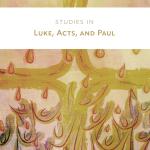Words Are Not Enough: Paratexts, Manuscripts, and the Real New Testament is a new book by Garrick Allen.
The book explores the question, “How did Scripture come to be?”
This volume is short and easy to read, though parts of it are technical.
If you are interested in the subject of paratexts, this is a book you want to add to your library.
This is from the publisher.
Allen’s innovative study of manuscript history explores the paratexts—titles, cross-references, prefaces, marginalia, and such—revealing how anonymous scribes contributed to our framing, and thereby our understanding, of the New Testament. He argues that this messy process of change is itself sacred—that on the handwritten page, Scripture and tradition meet.
An innovative study of the manuscript history of the New Testament, encompassing its paratexts—titles, cross-references, prefaces, marginalia, and more.
How did the Christian scriptures come to be? In Words Are Not Enough, Garrick V. Allen argues that our exploration of the New Testament’s origins must take account of more than just the text on the page. Where did the titles, verses, and chapters come from? Why do these extras, the paratexts, matter?
Allen traces the manuscript history of scripture from our earliest extant texts through the Middle Ages to illuminate the origins of the printed Bibles we have today. Allen’s research encompasses formatting, titles, prefaces, subscriptions, cross-references, marginalia, and illustrations. Along the way, he explains how anonymous scribes and scholars contributed to our framing—and thereby our understanding—of the New Testament.
But Allen does not narrate this history to try to unearth a pristine authorial text. Instead, he argues that this process of change is itself sacred. On the handwritten page, scripture and tradition meet. Students, scholars, and any curious reader will learn how the messy, human transmission of the sacred text can enrich our biblical interpretation.Garrick V. Allen is professor of divinity and biblical criticism at the University of Glasgow. He has written dozens of academic articles, popular pieces, and multiple award-winning monographs, including The Book of Revelation and Early Jewish Textual Culture, which won a Manfred Lautenschlaeger Award for Theological Promise, and Manuscripts of the Book of Revelation, which won the Paul J. Achtemeier Award for New Testament Scholarship.
Editorial Reviews
—Liv Ingeborg Lied, Norwegian School of Theology“This book is a game changer! As exegetes we are mainly interested in what we call the New Testament text(s). But a Bible is so much more—material, binding, titles, introductions, images, and marginalia—and all this influences our reading and understanding. It is time to change the field of biblical studies. Garrick Allen’s fascinating and very readable book opens the door.”
—Tobias Nicklas, University of Regensburg
“The increased attention given in recent decades to the documents that convey the text of the New Testament is most welcome. In this book, one of the leaders in this area of research makes clear the significance of paratextual features of manuscripts for a better understanding of the history of both text and canon of the New Testament.”
—Michael Holmes, Bethel University
“In an age of abundant digital texts, we need to go back to the manuscripts, their materiality and aesthetics, and their surprising features to get a realistic sense of the time in which biblical texts were created and first transmitted. Based on several major research projects, Garrick Allen presents fascinating insights into the changing design of biblical manuscripts, their layout and paratexts, titles, prefaces, prologues, cross-references. The book is well written and entertaining, and may change the way readers see the Bible.”
—Jörg Frey, University of Zurich
“In Words Are Not Enough, Garrick Allen brings the thrilling results of manuscript studies to a broad audience of students and scholars. As he shows, the New Testament is a material object that human communities continuously make and remake. With clarity and grace, he teaches readers what attending to manuscripts and their paratexts can offer while also showing, step by step, how to go about this work. This book performs a valuable service that will benefit anyone interested in the New Testament, early Christian history, and the history of the book. Highly recommended.”
—Jennifer Wright Knust, Duke University
“Brimming with knowledge, this invaluable introduction will intrigue, surprise, and—most importantly—educate anyone who wants to understand the manuscripts and physical reality of the New Testament.”
—Candida Moss, University of Birmingham, UK
“The Bible is often imagined as a kind of monument, a fixed point in an ever-changing world. In his new book, Garrick Allen argues persuasively that this model overlooks the Bible’s materiality: the Bible is always more than the sum of its texts, and—precisely because it is valued so highly—it changes constantly as its formatting and packaging changes.”
—Francis Watson, Durham University
“This important and engaging book draws our attention to everything that is usually left unscrutinized on the pages of a Bible or manuscript. Allen shows us, through his sensitive analysis, how paratexts shape biblical interpretation in profound and unexpected ways.”
—Yii-Jan Lin, Yale Divinity School
“This book demonstrates with admirable clarity the multiple ways in which material philology can shed light on the transmission and reception of the New Testament. Focusing on the frames and margins of the biblical texts, Allen shows how people in various ways have engaged with the New Testament and its manuscripts, and why it is not enough to simply study the words of the biblical texts by themselves to understand its historical significance and impact.”
—Hugo Lundhaug, University of Oslo














